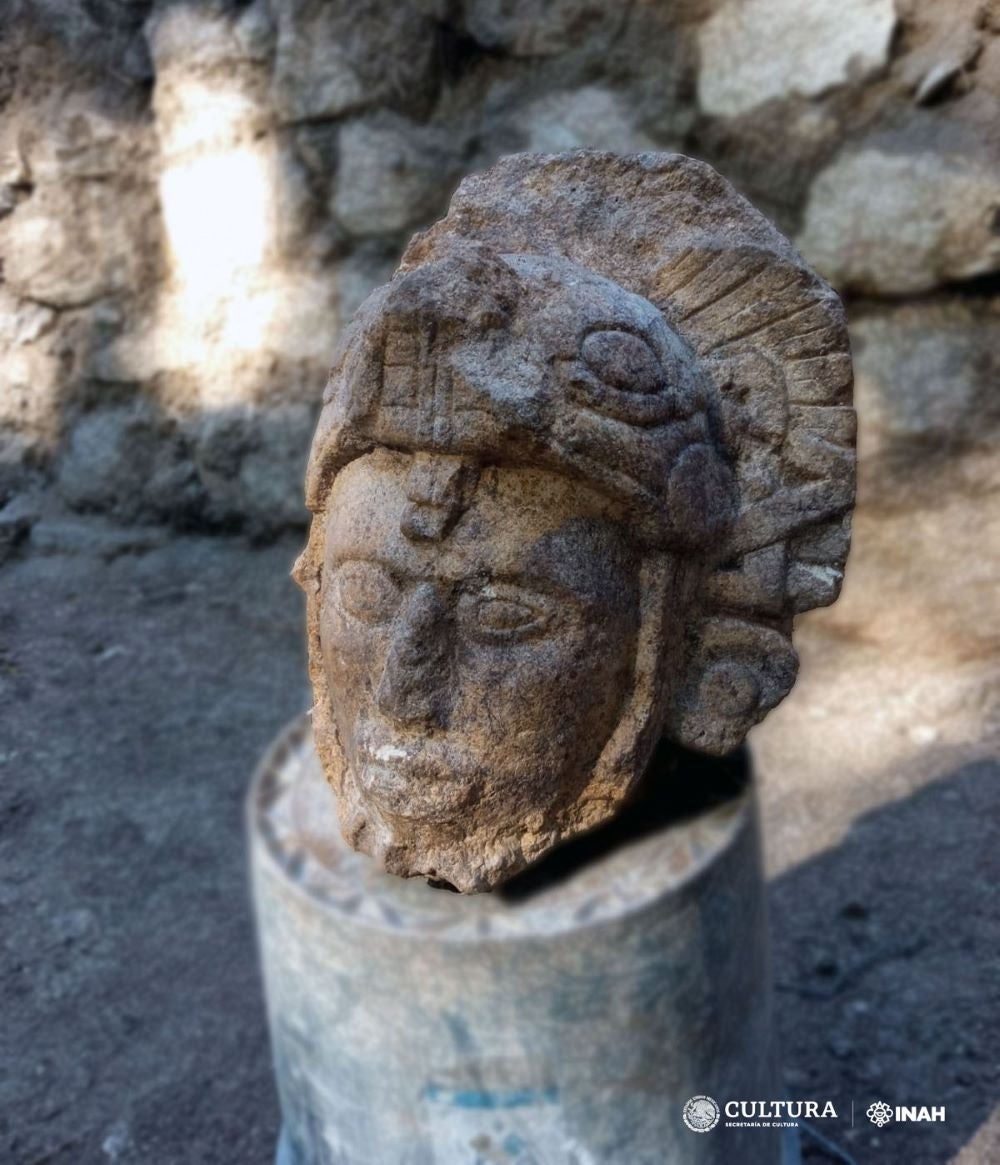Archaeologists find strange Maya warrior statue with helmet shaped like snake
Statute was discovered during archaeological dig accompanying railway line construction
Archaeologists have unearthed the strange statue of a Maya warrior wearing a snake-shaped helmet at the basement of a pre-Columbian temple in Mexico.
The 33cm (13in) tall and 28cm (11in) wide statue was discovered at Chichén Itzá in the Yucatán Peninsula, according to Mexico’s National Institute of Anthropology and History (INAH).
It appears to depict a warrior wearing a feathered dress and a helmet shaped like a serpent with its jaws open, and scholars suspect it may have once been part of a larger sculpture built about 1,000 years ago.
The pre-Columbian civilisation was one of the greatest Mayan centres of the Yucatán peninsula that flourished between the 9 and 13 century AD.
At its peak, Chichén Itzá is known to have been home to tens of thousands of people.
The site also has a pyramid called El Castillo rising about 30m (100ft) high.
The INAH has been working to build a new museum, visitor centers at the popular tourist destination, as well as a train line – The Tren Maya – connecting people to it.

Currently, Chichén Itzá receives at least 3.500 tourists a day – a number that can reach 8.000 daily visitors in the high season, according to UNESCO.
This calls for constant maintenance and attention to prevent deterioration of its prehispanic fabric.
The warrior’s sculpture, unearthed at the Casa Colorada complex in Chichén Itzá, was discovered during an archaeological survey accompanying the railway line construction.
So far, during the train line’s construction, a number of archaeological finds have been made, including more than a million ceramic fragments, and 600 human burials.
A number of architectural structures and a variety of other artifacts have also been discovered.
Scholars say the discovery of the face sculpture in the Archaeological Zone of Chichén Itzá is a sign of the contact today’s people of the region can have with their past.
Despite having a fracture, they say the sculpture stands out and is in a good state of conservation.
“It can be deduced that its sculptural parameters agree with those used in the earliest times of the Mayan city,” INAH added.
Join our commenting forum
Join thought-provoking conversations, follow other Independent readers and see their replies
Comments
Bookmark popover
Removed from bookmarks